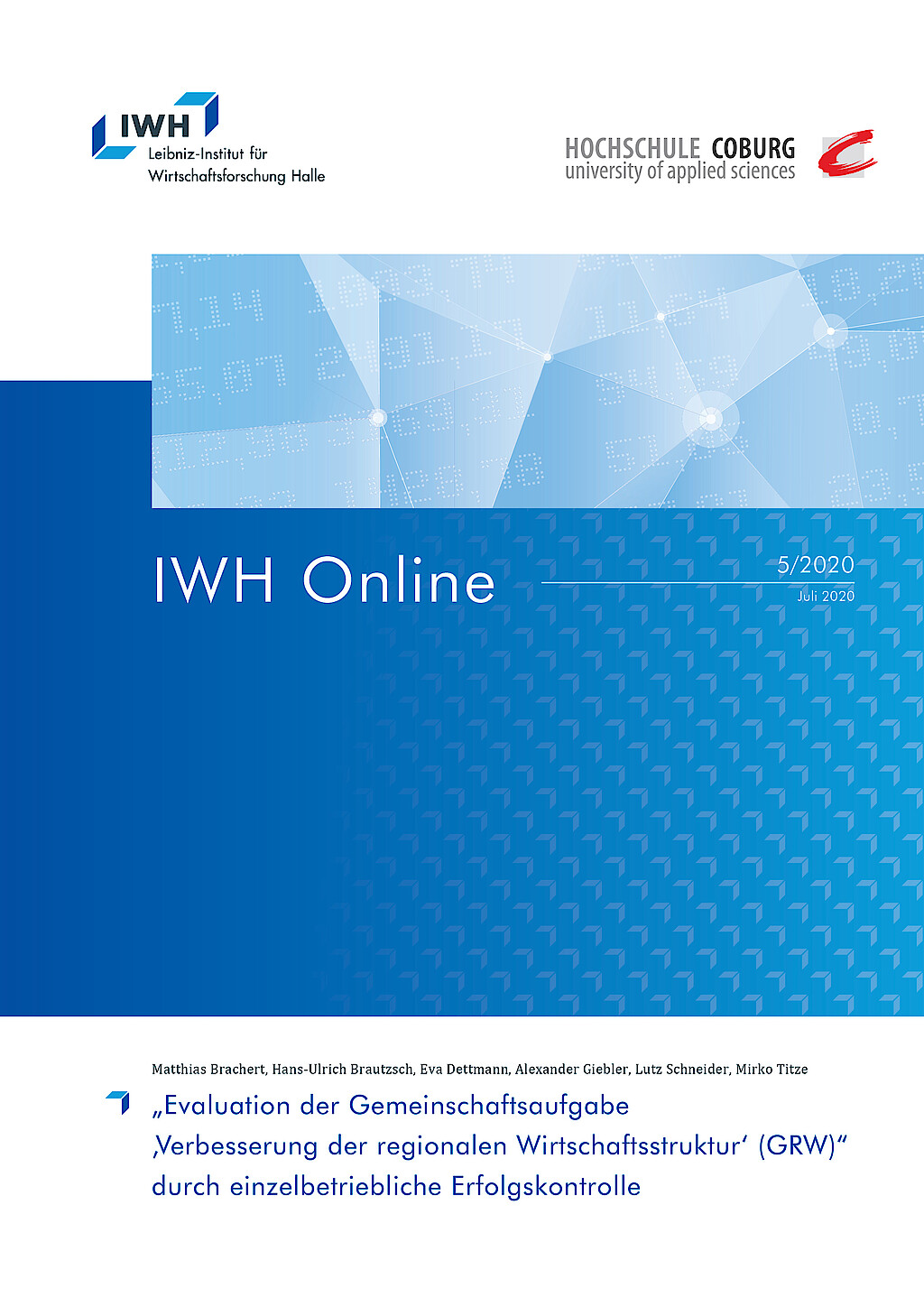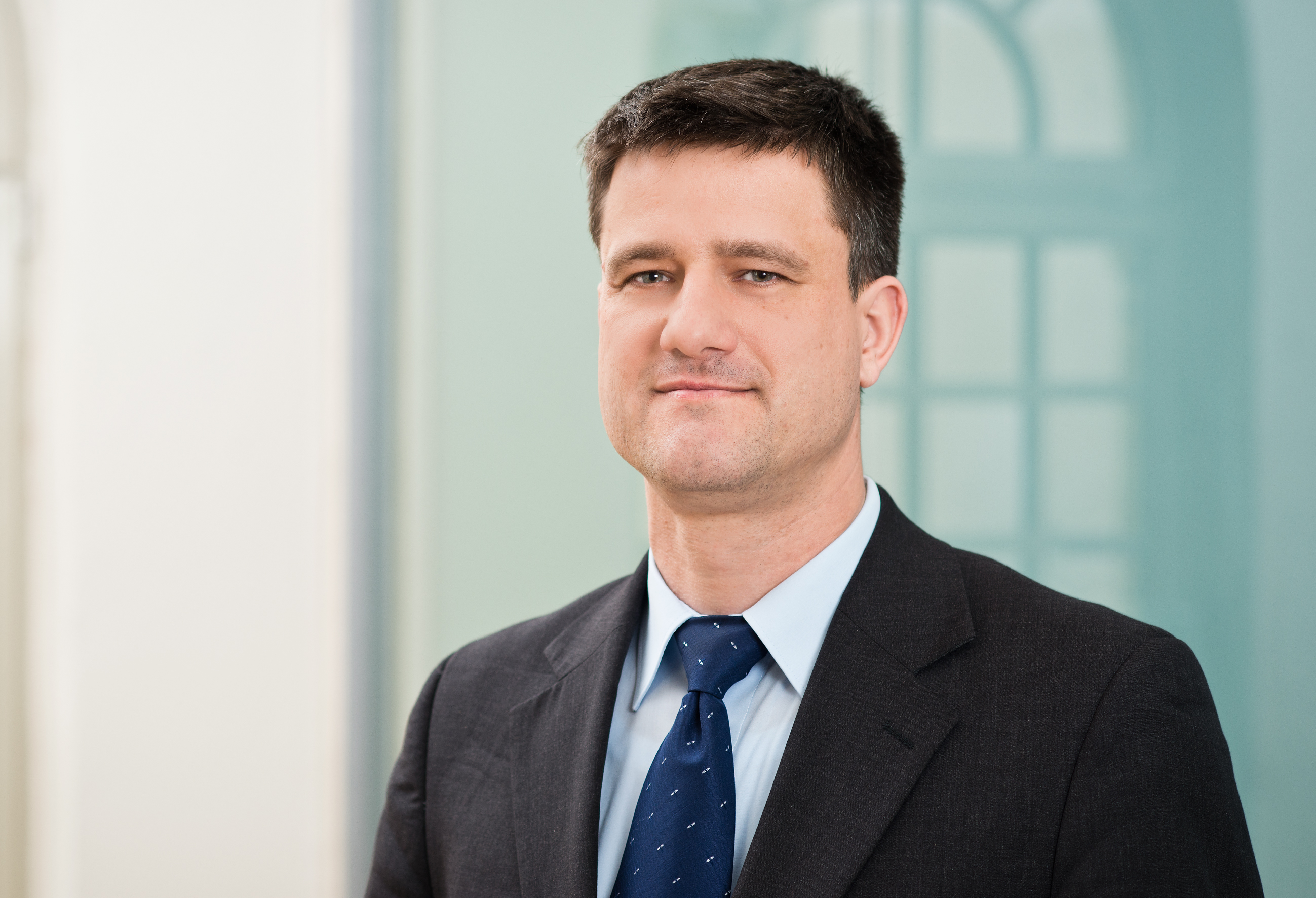
The Effects of German Regional Policy – Evidence at the Establishment Level
Die „Gemeinschaftaufgabe ‚Verbesserung der regionalen Wirtschaftsstruktur‘ (GRW)“ repräsentiert das wichtigste Instrument der Regionalpolitik in Deutschland. Das Förderprogramm gewährt nicht-rückzahlbare Zuschüsse als Anteilsfinanzierung für Investitionsprojekte von Betriebsstätten (und Kommunen) im GRW-Fördergebiet. Die Festlegung des Fördergebiets erfolgt anhand eines aus verschiedenen Teilindikatoren zusammengesetzten Strukturschwächeindikators und eines von der Europäischen Union festgelegten Anteils der in Fördergebieten lebenden Bevölkerung. Verantwortlich für die Auswahl der geförderten Projekte ist das jeweilige Land, in dem das GRW-Projekt beantragt wird.
20. July 2020
Institutional Framework
The GRW pursues the goal of creating and securing permanent, high-quality jobs in order to reduce regional disparities within Germany. Thus, disadvantaged regions shall be enabled to keep pace with the general economic development in Germany. The GRW is a demand-driven program – establishments and municipalities submit proposals for investment aid to the granting authorities (of the Federal States). As a rule, the applications have been and will be approved if the conditions for funding are met. However, the volume of GRW funding has declined in recent years. The approval statistics currently show a value of around 1 billion euros in funding per year.
Research Design
A credible evaluation of the GRW effects is only possible through counterfactual research designs. This involves comparing the development of target variables (employment growth, wage growth, productivity growth, etc.) between GRW-supported establishments (or regions) (treatment group) and establishments (or regions) that have not received GRW funding (control group).
However, the group of GRW-supported establishments does not represent a random selection of the German establishment (or municipality) landscape. The program is increasingly being used by dynamically developing establishments that are already active on the market (incumbents) and operate in very specific sectors. Many of these characteristics can also have an influence on the development of the target values of the policy. Hence, the simple comparison of GRW-supported and non-supported establishments is not appropriate to determine whether the development of the target variables is due to the firm characteristics or the granting of the support. Therefore, an evaluation design must convincingly address this selection.
The subject of this report is the analysis of the effects of the GRW on the target variables of supported establishments stated in the program. A difference-in-differences (DiD) approach in combination with a matching procedure is appropriate to credibly identify the program-effects given the policy rules for the assignment of GRW funds and the data at hand. This approach corresponds to the scientific standards of evaluation research and has proven to be practicable in more recent studies, particularly for Germany and Italy. In this research design, the change in a target value of GRW-supported establishments from the beginning of support is compared with the change in the target value in selected non-subsidized establishments. The effect of the GRW then results from the difference between both developments.
A two-stage matching procedure is used to construct a suitable control group of non-subsidized establishments. For this purpose, those non-subsidized establishments are selected which are as similar as possible to GRW-funded firms with regard to those observable characteristics which, from a theoretical point of view, could have an influence on the development of the target variables of the program and the probability of subsidization. In the first stage of the matching procedure (exact matching), non-subsidized establishments with a location in the non-assisted area that belong to the same industry class [4-digit codes] of the GRW-assisted establishments are preselected. A further criterion for the pre-selection is the observability of the characteristics for the same observation period as those of the GRW-assisted establishments. In the second stage of the matching procedure (Nearest-Neighbor Matching) the most similar non-subsidized establishment is assigned to a subsidized establishment. Unobservable features that do not change over time are taken into account via a DiD model.
The analyses in this report are based on data from official statistics. The analyses of the labor market-outcomes use process data that are collected in the context of the firm reports on employment subject to social security contributions to the Federal Employment Agency and are provided by the Institute for Employment Research (IAB). The data used to assess the effects of the GRW on the competitiveness of the subsidized establishments come from the monthly or annual reports and the production and investment surveys of companies with at least 20 employees in the manufacturing sector and in mining and quarrying, which are collected by the statistical offices of the Federal Government and the Länder and made available via their research data centers (Official Company Data for Germany, AFiD). These data are linked to the GRW funding information of the Federal Office of Economics and Export Control (BAFA). Given the GRW funding rules and the available data, the effects of the GRW can be investigated for the funding cohorts of the years 2009-2016.
Results
The results for labor market outcomes show a clearly positive effect of the GRW on the growth of employment in the treated establishments. Depending on the specification, the effect ranges between 10 and
15 percentage points. The positive employment effect is observable over all periods under consideration (from start of the project to up to
5 years after it has finished), but decreases slightly towards the end of the commitment period. For companies in the manufacturing sector the employment effect is somewhat lower at 8 to 13 percentage points. There is no effect of GRW-funding on establishment wages from the beginning of the investment project until 3 years after the end of the project. A moderate effect (in the amount of 2.0 to 2.5 percentage points) can be demonstrated for longer periods of observation (up to
4 or 5 years after the end of the investment project). Finally, we do not see any effect of the GRW on employment structures (share of high-skilled/low-skilled workers).
For the subsample of establishments in the manufacturing sector we further studied the impact of the GRW program on productivity growth and export shares as proxies for competitiveness. We do not find any effect of the GRW on both outcomes. However, as we define productivity as turnover per worker it is worth mentioning that the GRW program has a positive effect on turnover growth, but that the effect (7 to 12 percentage points) is slightly smaller than the effect on employment growth (8 to 13 percentage points) for this subsample.
In 2022 we will prepare a follow-up report, which will also include the funding cohorts of the years 2017-2020 in the analyses. This report will deal with some aspects of the present study in more detail. These include in particular the question of whether the GRW actually had an incentive effect for the subsidized establishments in terms of expanding investment activity. Furthermore, we will provide an in-depth analysis of heterogeneous treatment effects (e.g., at sectorally disaggregated level, according to firm size and age as well as other firm characteristics). Moreover, we will be capable to study the effects of the GRW program in the long-run. Finally, the effects are put into relation to the amount of funding spent, which allows statements to be made on the economic efficiency of the program.
At the regional level, the analyses based on panel econometric methods show robust positive correlations between GRW support and the growth of regional employment and income for the long period under consideration from 2000 to 2017. The magnitude of this regional effect of the GRW - in relation to the intensity of support - can be classified as rather moderate. For example, an increase in the approved regional GRW funds by Euro 1,000 per employed person would increase annual employment growth by one percentage point and annual GDP growth by about 3 percentage points. Furthermore, a positive effect on regional productivity growth can be demonstrated - albeit only for the relatively long period under review - which would amount to about 2 percentage points if the GRW funds were increased by 1,000 euros per person in employment. The current level of support is about 8 euros per employee.
Policy Implications
The crucial problem of lagging regions in Germany is the persistent gap in terms of productivity in comparison with richer areas. In 2017, this gap amounted to approximately 15 percentage points. In view of the changed labor market situation (prior to the current Corona crisis), a reweighting of the GRW objectives can therefore be considered reasonable. The objective of improving the competitiveness of the supported establishments (and regions), especially with regard to their productivity, could be given a greater weight without losing sight of the employment objective.
Adding productivity to the catalogue of objectives of the GRW can be justified by two arguments in particular. Firstly, productivity is the key variable for competitiveness. More productive firms are capable to compete in (mature) markets, and this would positively affect survival rates of assisted firms in the long-run. This would – as a positive side effect – also address labor market outcomes in a positive way. Secondly, increasing productivity (calculated as output per unit labour input) in times of an ageing and in parts regionally shrinking population is the only way to ensure the (nationwide) growth of output in the future.
However, including productivity in the list of targets is challenging as it requires the definition of appropriate indicators. Moreover, the revised institutional setting for the funding scheme has to avoid disincentives for firms to reduce employment and unintended re-distribution of productivity gains within firms. The following ideas give an outlook for a further development of the GRW funding system. First, funding rules should address the quality of employment in supported establishments. The empirical literature provides rich evidence that the qualification level of employees is linked to firm productivity. Second, and in addition to that, funding rules have to take into account that an increase in productivity can also be achieved by reducing the input of labor. Here, the trade-off between productivity and employment targets becomes obvious. Against this backdrop, wages become of crucial importance. GRW funding rules have to ensure that productivity gains can trickle down to employees and are not redistributed to property incomes. In this context, the literature highlights the wage-setting power of firms finds, for example, that the elasticity of wages in Germany is less than it should be in markets with perfect competition. One option to solve this problem could be to link the allocation of GRW funds to wage development in the assisted establishments.





